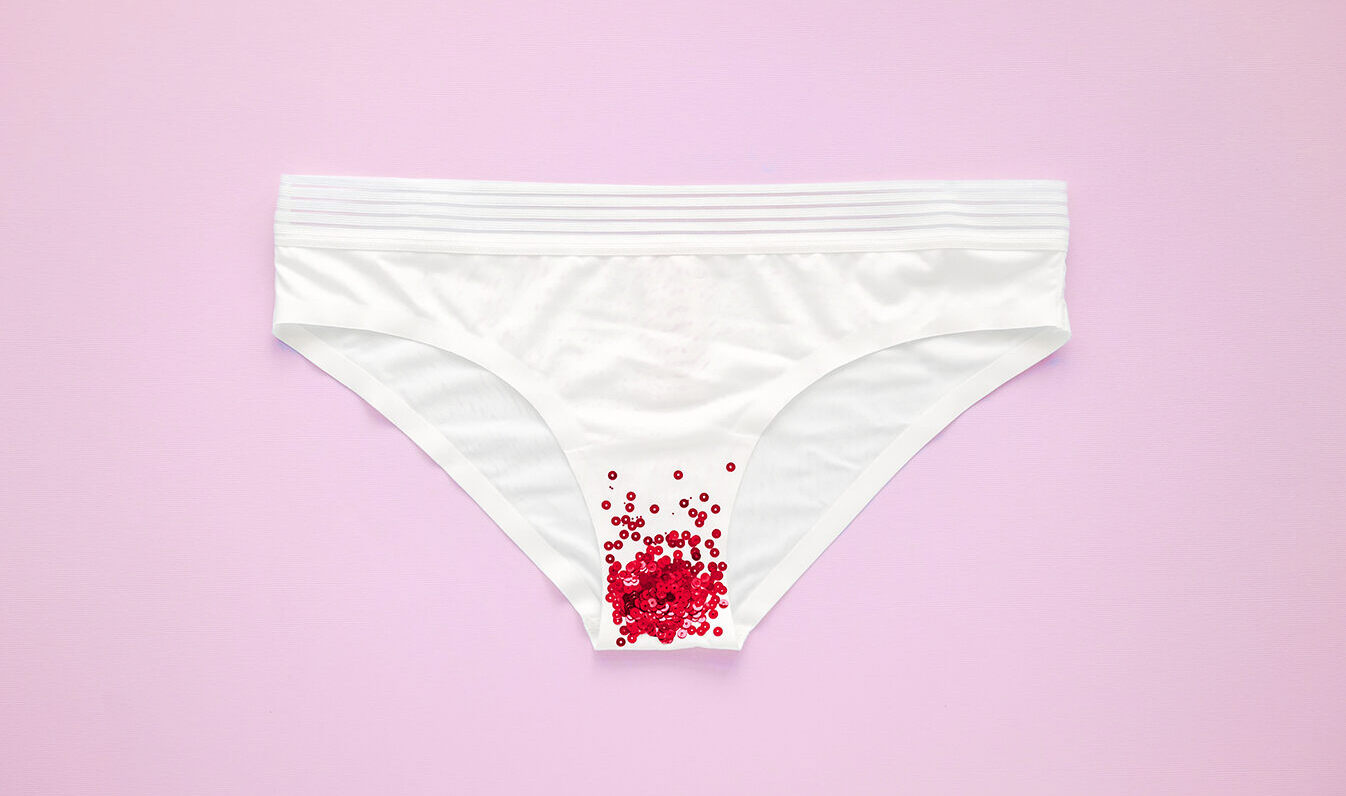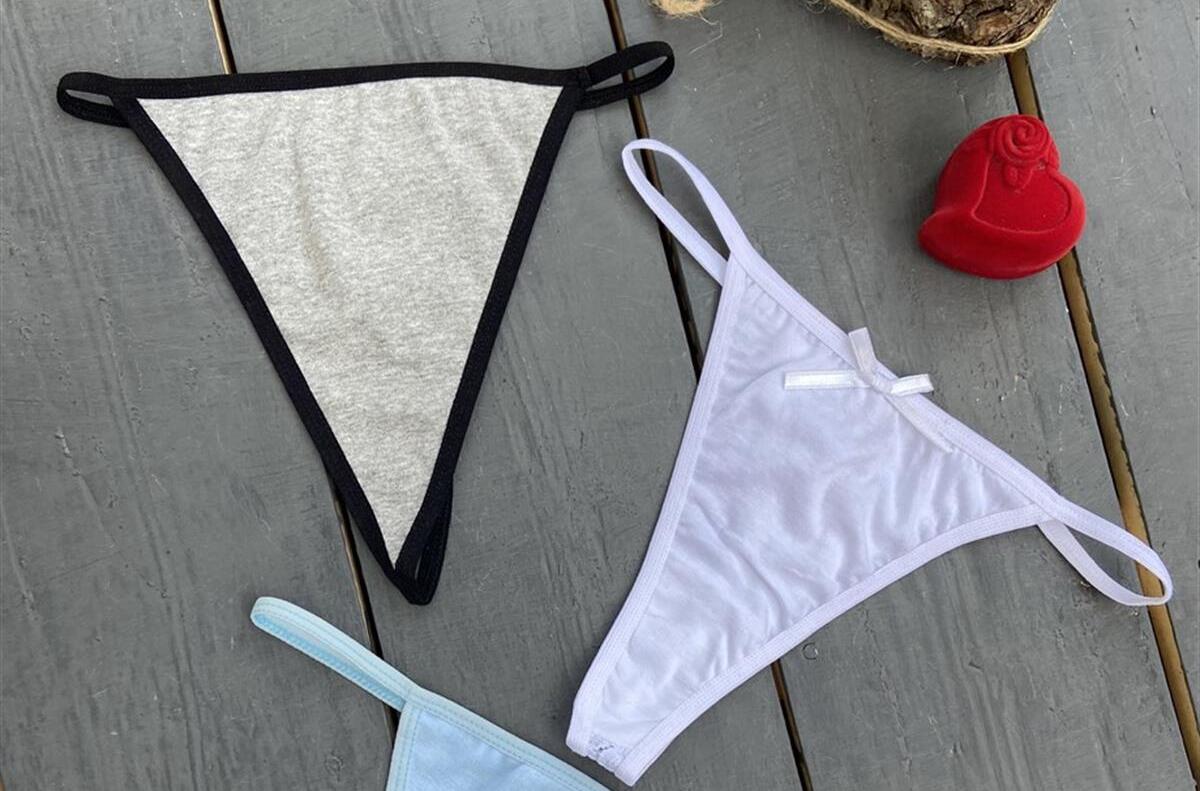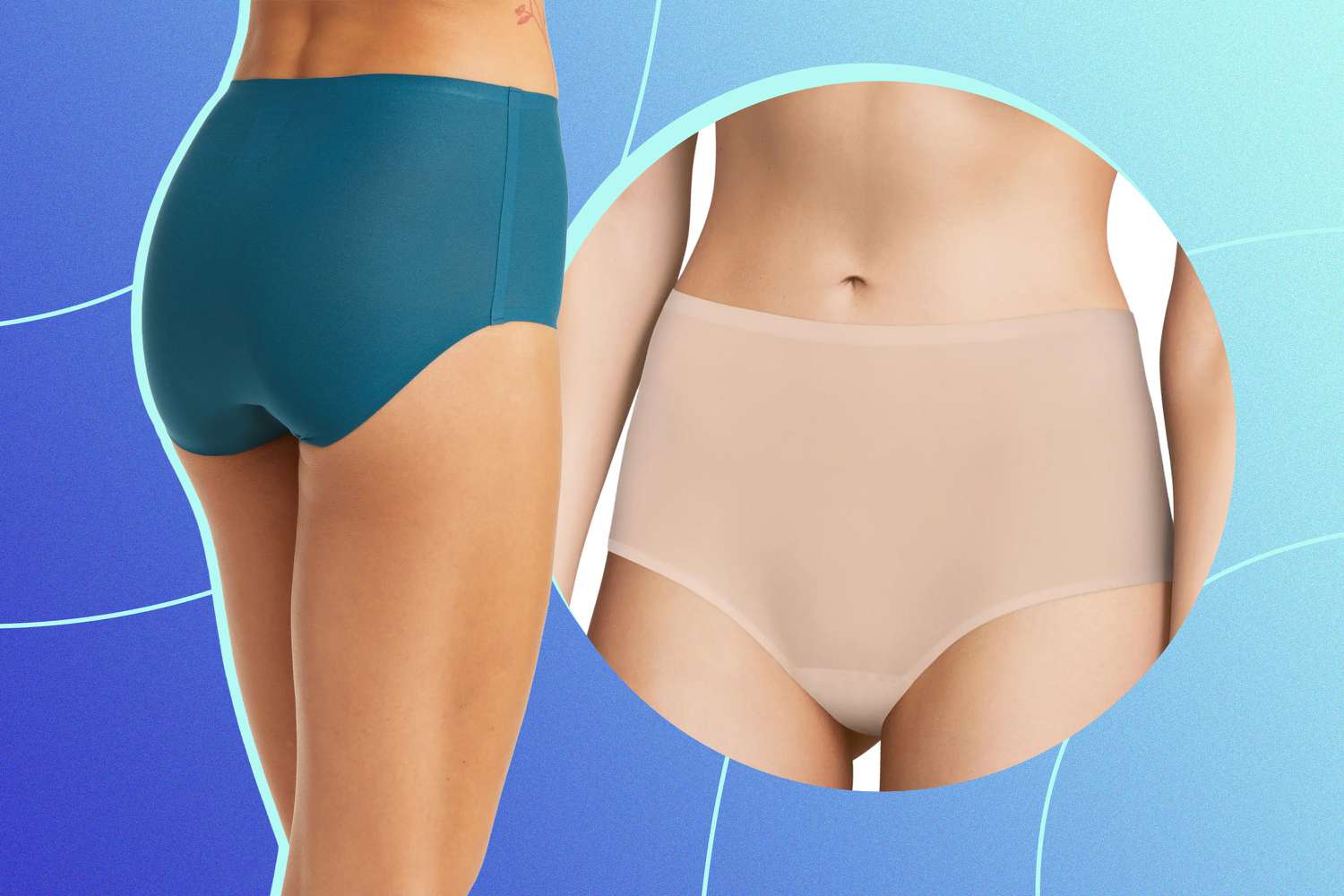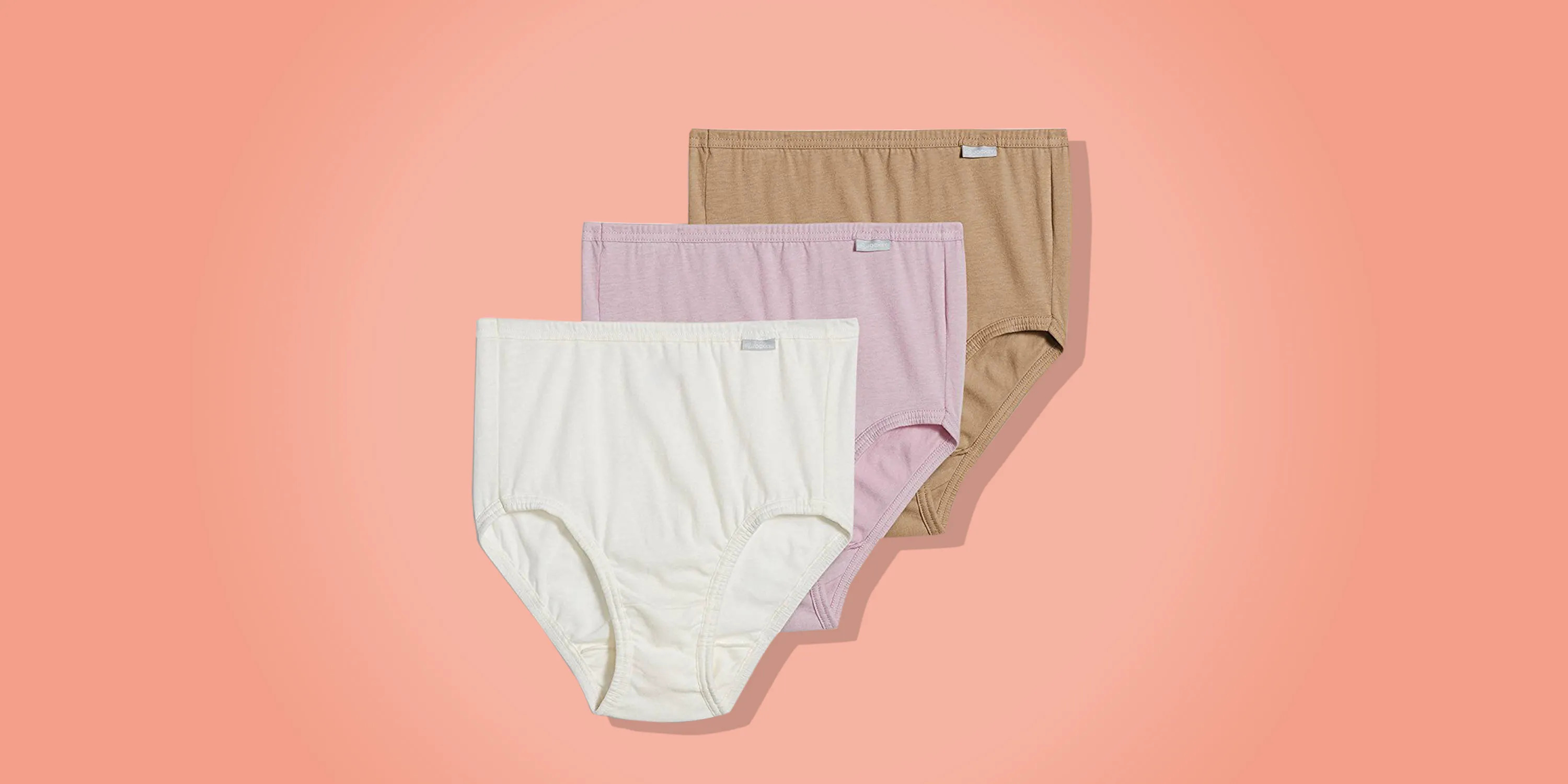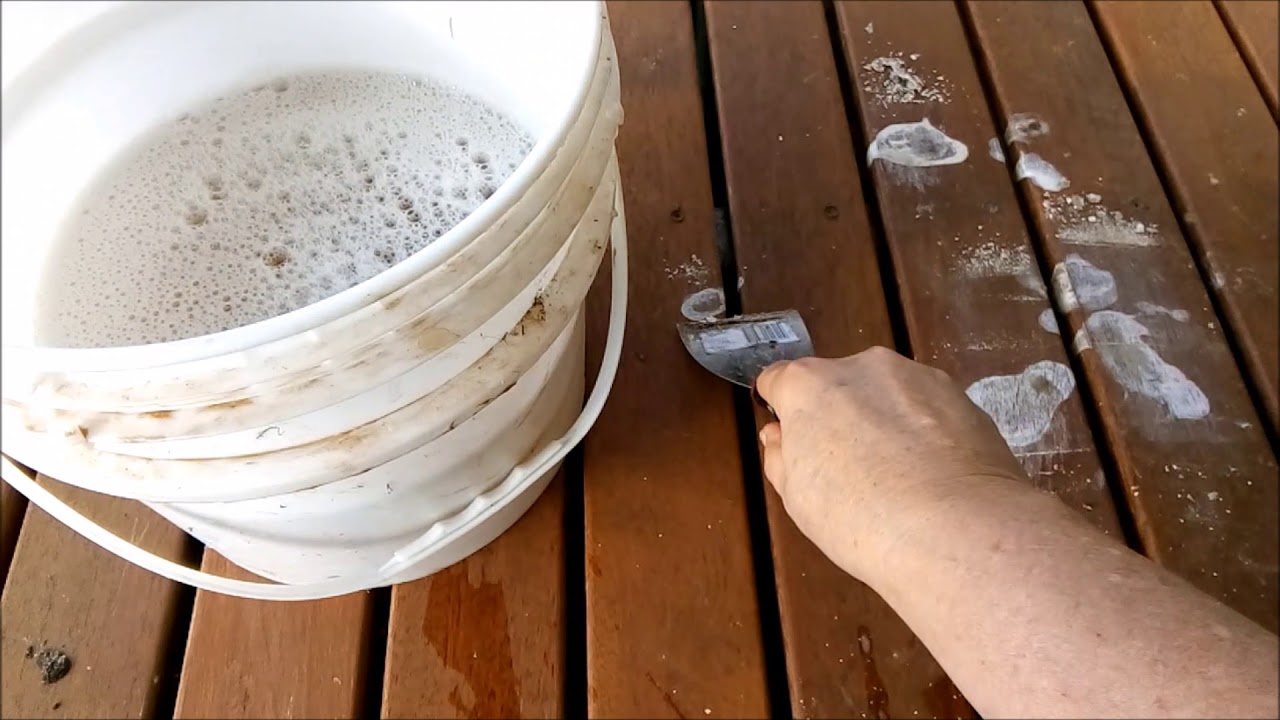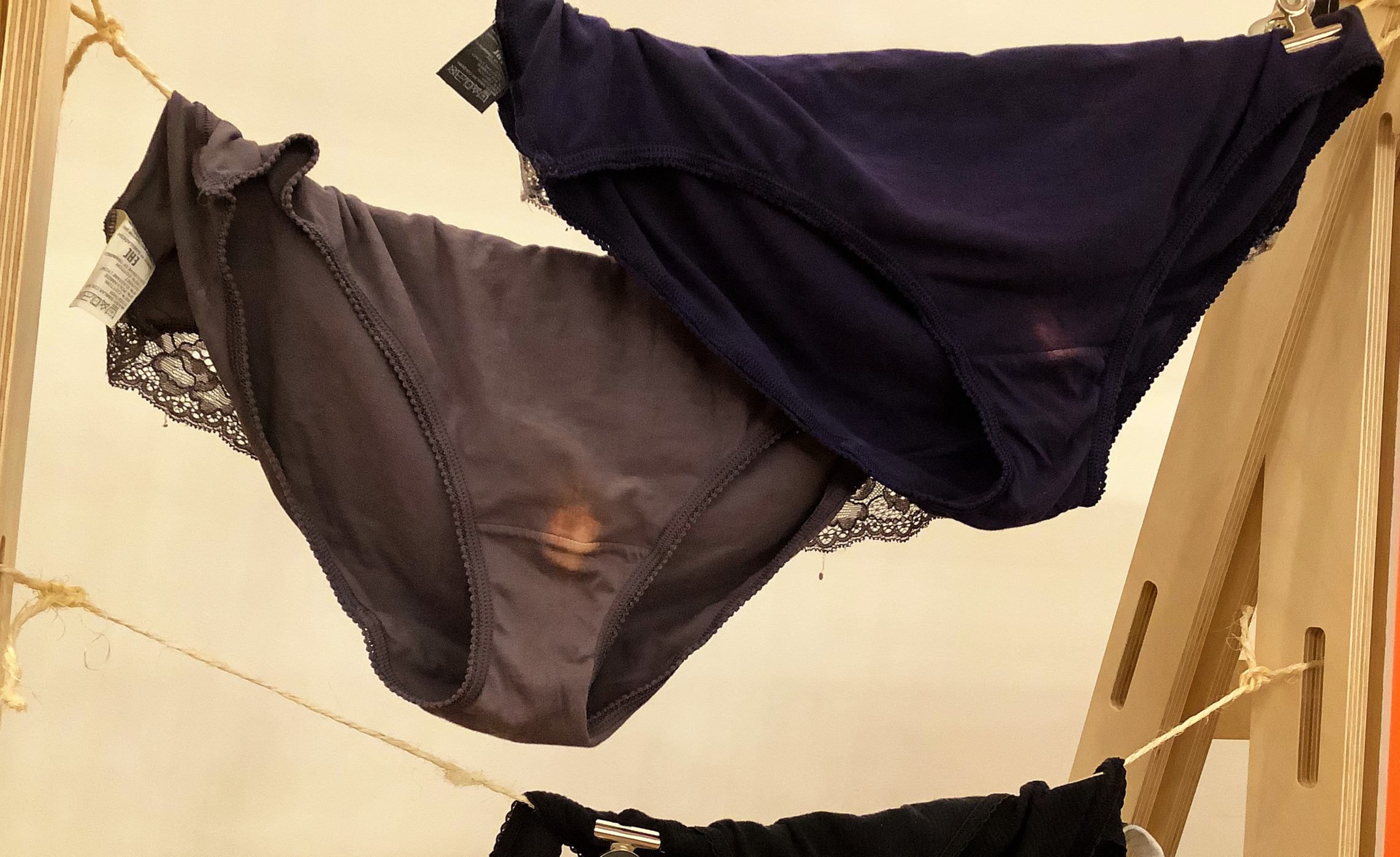

FAQs
What Causes Stains In Panties
Published: July 31, 2023
Discover the common causes of stains in panties and find answers to general questions about why they occur.
(Many of the links in this article redirect to a specific reviewed product. Your purchase of these products through affiliate links helps to generate commission for Under-tec.com, at no extra cost. Learn more)
Table of Contents
- Introduction
- Common Causes of Stains in Panties
- Menstrual Blood
- Vaginal Discharge
- Urinary Incontinence
- Sweat and Body Oils
- Residue from Hygiene Products
- Stains from Sexual Activity
- Fecal Matter
- Environmental Factors
- How to Prevent Stains in Panties
- Regularly Change Panties
- Use Proper Hygiene Practices
- Use Panty Liners or Menstrual Products
- Address Urinary Incontinence
- Avoid Stain-Causing Substances
- Conclusion
Introduction
When it comes to maintaining personal hygiene, panties play a vital role in keeping us comfortable and protected. However, it’s not uncommon to find stains in our panties from time to time. While it may be an uncomfortable topic to discuss, understanding the common causes of these stains can help us take necessary precautions and maintain cleanliness.
Stains in panties can be caused by various factors, including menstrual blood, vaginal discharge, urinary incontinence, sweat, and body oils. Additionally, residue from hygiene products, stains from sexual activity, fecal matter, and environmental factors may also contribute to these stains. It is important to address these issues and take preventive measures to avoid embarrassing situations and potential health risks.
In this article, we will delve into the common causes of stains in panties and provide useful tips on how to prevent and tackle these issues. By understanding the root causes, you can make informed choices and take steps to keep your panties clean and stain-free.
Common Causes of Stains in Panties
Stains in panties can be quite common and can occur due to various factors. Understanding these causes can help us address the issue and take appropriate measures to prevent and minimize stains. Let’s explore some of the most common causes:
- Menstrual Blood: One of the primary causes of stains in panties is menstrual blood. During menstruation, some blood may leak and stain the underwear. Using proper menstrual hygiene products, such as tampons or pads, and changing them regularly can help minimize stains.
- Vaginal Discharge: Vaginal discharge is a normal part of a woman’s reproductive health. However, it can sometimes leave stains in panties. Wearing panty liners can help absorb any discharge and prevent it from staining the underwear.
- Urinary Incontinence: Urinary incontinence, a condition characterized by involuntary urine leakage, can also result in stains in panties. It is important to address this issue and consult a healthcare professional for guidance on managing urinary incontinence and using appropriate protective aids.
- Sweat and Body Oils: Sweat and body oils can leave stains on panties, especially during hot and humid weather or after physical activities. It is recommended to change panties regularly and opt for breathable fabrics that absorb moisture effectively.
- Residue from Hygiene Products: Some hygiene products, such as vaginal creams or suppositories, can leave residue on panties, leading to stains. Following proper instructions for using these products and wearing a panty liner can help prevent stains.
- Stains from Sexual Activity: Intimate activities can sometimes result in stains in panties. Engaging in open communication with your partner about cleanliness and practicing safe and hygienic sexual activities can minimize the risk of stains.
- Fecal Matter: Accidental fecal matter leakage can also lead to stains in panties. Maintaining good bowel health, including a fiber-rich diet and staying adequately hydrated, can help prevent such incidents.
- Environmental Factors: Environmental factors, such as sitting on dirty surfaces or exposure to dirt and dust, can also contribute to stains in panties. Being mindful of your surroundings and practicing good hygiene habits can help minimize the impact of these factors.
Now that we’ve explored the common causes of stains in panties, let’s move on to the next section, where we will discuss effective preventive measures to keep your panties clean and stain-free.
Menstrual Blood
One of the most common causes of stains in panties is menstrual blood. During menstruation, it’s normal for some blood to leak from the vagina, which can result in staining. To prevent and manage stains from menstrual blood, here are some helpful tips:
- Use Proper Menstrual Hygiene Products: Using the right menstrual hygiene products, such as tampons or pads, is crucial to prevent leaks and stains. Choose products that suit your flow, and remember to change them regularly, following the manufacturer’s guidelines.
- Consider Menstrual Cups: Menstrual cups are becoming increasingly popular as an eco-friendly and effective alternative to traditional tampons and pads. They can provide leak-free protection and minimize the risk of stains. However, proper insertion and removal techniques are essential for their efficient use.
- Wear Dark-Colored Panties: Opting for dark-colored panties, especially during your menstrual cycle, can help camouflage any potential stains. Dark colors, such as black or navy, can be more forgiving when it comes to hiding them.
- Try Panty Liners: Panty liners are thin absorbent pads that can be worn daily to help keep your underwear clean and stain-free. They are especially useful during the beginning and end of your menstrual cycle when the flow is lighter.
- Pre-Treat Stains: If you do experience a menstrual blood stain, it’s essential to pre-treat it before washing. Rinse the stain with cold water to remove any residual blood, and then apply a stain-removing solution or detergent directly to the affected area before laundering.
- Follow Washing Instructions: When it’s time to wash your stained panties, refer to the garment’s care label for specific washing instructions. Using an appropriate detergent and following the recommended water temperature can help remove stains effectively.
By implementing these strategies, you can minimize the chances of menstrual blood stains on your panties. Remember, understanding your menstrual cycle and having the necessary products on hand will go a long way in keeping your panties clean and fresh.
Vaginal Discharge
Vaginal discharge is a natural and healthy occurrence in women. It helps to keep the vagina clean and free from harmful bacteria. However, the presence of vaginal discharge can sometimes result in staining on panties. Here are some tips to prevent and manage stains from vaginal discharge:
- Use Panty Liners: Panty liners are thin absorbent pads that can be used daily to catch and absorb vaginal discharge. By wearing panty liners, you can prevent the discharge from coming into direct contact with your underwear, reducing the likelihood of stains.
- Change Panty Liners Regularly: It’s crucial to change panty liners frequently, especially if you have increased discharge. By doing so, you ensure freshness and minimize the risk of stains from prolonged exposure to discharge.
- Take Note of Ovulation: Some women experience an increase in vaginal discharge during ovulation. By tracking your menstrual cycle and noting the days when you have a higher discharge, you can be prepared with extra panty liners or change your underwear more frequently during those times.
- Wear Breathable Underwear: Opt for panties made from breathable materials like cotton. These fabrics allow better airflow and help prevent moisture buildup, reducing the chances of odor and stains resulting from trapped discharge.
- Avoid Strong Fragrances: Some scented or perfumed products, such as soaps or sprays, can disrupt the natural pH balance of the vagina and increase discharge. Using unscented, mild, and pH-balanced products for intimate hygiene can help maintain a healthy level of discharge and minimize stains.
Remember that vaginal discharge is a normal bodily function, and its amount and consistency may vary throughout your menstrual cycle. By following these preventive measures, you can stay comfortable, fresh, and minimize the potential for stains in your panties caused by vaginal discharge.
Urinary Incontinence
Urinary incontinence, the involuntary leakage of urine, can be a common issue for many individuals, especially women. This condition can lead to stains in panties and can be embarrassing and uncomfortable. However, there are ways to address urinary incontinence and minimize the risk of stains:
- Consult a Healthcare Professional: If you experience urinary incontinence, it’s essential to consult with a healthcare professional who can help determine the underlying cause and recommend appropriate treatment options. They can provide guidance and suggest exercises or medications to manage the condition.
- Use Protective Aids: There are various protective aids available to manage urinary incontinence, such as disposable or reusable pads, protective underwear, or adult diapers. These aids can absorb urine and prevent it from reaching your panties, reducing the chance of stains.
- Practice Pelvic Floor Exercises: Strengthening the pelvic floor muscles can help improve bladder control and reduce the frequency and severity of urinary incontinence. Incorporate regular pelvic floor exercises into your daily routine to strengthen these muscles and potentially reduce leakage.
- Drink Adequate Fluids: Although it may seem counterintuitive, staying hydrated is important for urinary health. However, it’s essential to drink fluids in moderation to avoid overactive bladder symptoms. Limiting caffeine and alcohol intake can also help minimize urine production.
- Pee Regularly: Emptying your bladder on a regular schedule can help prevent urinary incontinence episodes. Create a routine and practice “timed voiding” by visiting the restroom before your bladder reaches its maximum capacity.
Understanding and managing urinary incontinence can significantly improve your quality of life and reduce the risk of stains in your panties. Remember, there are effective treatment options available, and with the right techniques and aids, you can regain control and maintain confidence in your daily activities.
Sweat and Body Oils
Sweating is a natural process that helps regulate body temperature. However, sweat, combined with body oils, can cause stains in panties and lead to unpleasant odors. To prevent and manage stains from sweat and body oils, consider the following tips:
- Change Panties Regularly: It’s important to change your panties on a daily basis, especially if you are prone to sweating. Fresh underwear will help reduce the accumulation of sweat and body oils, minimizing the chances of stains and odor.
- Opt for Breathable Fabrics: Choose panties made from breathable materials such as cotton, which allow better airflow and help wick away moisture. Avoid synthetic fabrics that trap sweat and tend to retain odors.
- Consider Moisture-Wicking Underwear: If you engage in activities that cause excessive sweating, such as exercise or physical labor, investing in moisture-wicking underwear can be beneficial. These specialized garments are designed to pull moisture away from the skin, keeping you dry and reducing the risk of stains.
- Shower Regularly: Maintaining good hygiene practices is essential to keep sweat and body oils under control. Shower daily, especially after sweating excessively, to cleanse the skin and prevent the buildup of bacteria and odor.
- Avoid Tight-Fitting Clothing: Wearing tight underwear or clothing can restrict airflow, leading to increased sweating and the formation of stains and odor. Opt for loose-fitting garments that allow for better ventilation.
- Use Antiperspirants or Deodorants: Applying antiperspirants or deodorants to clean, dry skin can help reduce sweating and control body odor. Look for products that are specifically designed for sensitive and intimate areas.
By implementing these strategies, you can minimize the impact of sweat and body oils on your panties. Remember, maintaining proper hygiene practices, choosing breathable fabrics, and taking preventive measures will keep you feeling fresh and comfortable throughout the day.
Residue from Hygiene Products
Using hygiene products is a crucial part of maintaining cleanliness and personal care. However, some hygiene products, such as vaginal creams, suppositories, or medicated wipes, can leave residue on panties, resulting in stains. Here are some tips to prevent and manage stains from the residue of hygiene products:
- Follow Product Instructions: Read and follow the instructions provided with the hygiene products carefully. Understanding the correct usage and applying the appropriate amount can help minimize the chances of residue transferring onto your panties.
- Wear Panty Liners: Wearing panty liners can provide an additional layer of protection between the product and your underwear, helping to absorb any potential residue. Change the liners regularly to maintain cleanliness and freshness.
- Wait for Absorption: If you are using vaginal creams or suppositories, it’s important to allow enough time for the product to be fully absorbed before putting on your panties. This can help reduce the chance of residue transfer.
- Choose Unscented or Mild Products: Some scented or harsh hygiene products may leave behind more residue. Opt for unscented or mild alternatives, as they are less likely to cause stains or irritation.
- Pre-Treat Stains: If you notice residue stains on your panties, pre-treat them before washing. Rinse the stained area with cold water to remove any excess residue, then apply a stain-removing solution or detergent directly to the affected area before laundering.
- Follow Proper Washing Instructions: When it’s time to wash your stained panties, refer to the garment’s care label for specific washing instructions. Using an appropriate detergent and following the recommended water temperature can help effectively remove stains.
By being mindful of the hygiene products you use and taking preventive measures, you can minimize the chances of residue from these products staining your panties. Keeping your underwear clean and free from unwanted stains will contribute to your overall comfort and confidence in maintaining personal hygiene.
Stains from Sexual Activity
Engaging in sexual activity is a natural and enjoyable part of many people’s lives. However, it can sometimes lead to stains in panties, which can be a source of embarrassment. Here are some tips to manage and prevent stains from sexual activity:
- Practice Safe and Hygienic Sexual Activity: Prioritize safe and hygienic sexual practices to minimize the chances of stains. This includes using protection, such as condoms, and ensuring both partners have good personal hygiene before engaging in sexual activity.
- Communication with Your Partner: Open and honest communication with your partner about cleanliness and hygiene expectations can help prevent and address any potential stains. Discussing preferences and concerns can contribute to a comfortable and enjoyable sexual experience for both parties.
- Keep Wet Wipes or Towels Handy: Having wet wipes or a towel nearby during and after sexual activity can help clean up any fluids and reduce the chances of stains. It’s essential to clean the genital area gently to avoid irritation or discomfort.
- Consider Changing Panties: If you anticipate a higher likelihood of stains during sexual activity, consider changing into a fresh pair of panties beforehand. This can help ensure that any potential fluids are contained and minimize the risk of staining your regular underwear.
- Pre-Treat Stains: If you do end up with stains on your panties from sexual activity, it’s important to pre-treat them before washing. Rinse the stained area with cold water to remove as much of the stain as possible, and then apply a stain-removing solution or detergent directly to the affected area before laundering.
It’s essential to approach sexual activity with a focus on comfort, pleasure, and cleanliness. By following these tips, you can reduce the chances of stains in your panties and enjoy worry-free intimate moments with your partner.
Fecal Matter
Accidental leakage of fecal matter can occur for various reasons, such as digestive issues or bowel control problems. It can lead to stains in panties and can be an uncomfortable and embarrassing situation. Here are some tips to manage and prevent stains from fecal matter:
- Maintain Good Bowel Health: A healthy digestive system can help minimize the chances of fecal matter leakage. Ensure you have a balanced diet rich in fiber and stay adequately hydrated to promote regular bowel movements and reduce the risk of accidents.
- Practice Good Bathroom Habits: Establish a regular bowel routine and make it a habit to use the restroom when you feel the urge to have a bowel movement. This can help prevent accidental leakage and minimize the risk of stains.
- Use Protective Aids: Consider using protective aids, such as disposable or reusable incontinence pads or adult diapers, to manage fecal matter leakage. These aids are designed to absorb and contain any leakage, reducing the chance of stains in your panties.
- Take Care of Skin Health: After any accidental fecal matter leakage, it’s important to clean the affected area gently to maintain skin health. Use mild, fragrance-free cleansers and pat dry instead of rubbing to avoid irritation. Applying a barrier cream or ointment can also help protect the skin.
- Carry Extra Supplies: When going out, it can be helpful to carry extra supplies, such as wipes, disposable bags, and a change of underwear. Being prepared can help you manage any accidents that may occur and prevent stains.
- Pre-Treat Stains: If you do experience stains from fecal matter in your panties, it’s important to pre-treat them before washing. Rinse the stained area with cold water to remove any excess matter, and then apply a stain-removing solution or detergent directly to the affected area before laundering.
Dealing with fecal matter leakage can be challenging, but by following these tips and taking necessary precautions, you can effectively manage the situation and minimize the impact of stains on your panties. Remember, maintaining good bowel health and being prepared can make a significant difference in promoting comfort and cleanliness.
Environmental Factors
Environmental factors can also contribute to stains in panties. Sitting on dirty surfaces, exposure to dirt and dust, or contact with other materials and substances can lead to unsightly marks. Here are some tips to help minimize the impact of environmental factors on your panties:
- Be Mindful of Where You Sit: Avoid sitting on dirty surfaces or areas that can potentially stain your panties. Always check the cleanliness of seats or surfaces before sitting down, especially in public places.
- Carry a Small Towel: Keeping a small towel or cloth with you can help protect your panties from environmental stains. You can place the towel on the seat before sitting down to create a barrier between you and any potential dirt or residue.
- Wear Protective Clothing: Consider wearing protective clothing, such as aprons or coveralls, when engaging in activities that may expose your panties to stains from dirt, dust, or other substances. This can be particularly helpful for activities like gardening or handling chemicals.
- Avoid Stain-Causing Substances: Be cautious around substances that can stain your panties, such as certain dyes, paints, or oils. Take appropriate measures, such as wearing gloves or using protective barriers, to minimize contact and prevent stains.
- Wash Soiled Items Separately: If you have garments or items that are visibly soiled or stained, it’s best to wash them separately from your panties. This can prevent any transfer of stains or dirt onto your underwear during the washing process.
- Follow Proper Washing Instructions: When laundering your panties, it’s important to follow the care instructions on the garment’s label. Using appropriate detergents, water temperature, and washing cycles can help effectively remove environmental stains and keep your panties clean and fresh.
By being aware of your surroundings and taking proactive measures to protect your panties, you can minimize the impact of environmental factors on stains. Incorporating these practices will help to ensure that your underwear stays in good condition for longer periods and maintains its cleanliness.
How to Prevent Stains in Panties
While stains in panties may be a common occurrence, there are several preventive measures you can take to keep your underwear clean and stain-free. By implementing the following tips, you can minimize the chances of stains and maintain good hygiene:
- Regularly Change Panties: It’s essential to change your panties daily to keep them fresh and prevent the buildup of sweat, vaginal discharge, or other bodily fluids that can lead to stains.
- Use Proper Hygiene Practices: Practicing good hygiene, including regular bathing and proper intimate care, can help maintain cleanliness and reduce the risk of stains from bodily secretions.
- Use Panty Liners or Menstrual Products: Panty liners are a helpful accessory to absorb daily vaginal discharge and minimize stains. During your menstrual cycle, using the appropriate menstrual products, such as pads or tampons, is crucial for preventing stains from menstrual blood.
- Address Urinary Incontinence: If you experience urinary incontinence, consult a healthcare professional for guidance on managing the condition. Using protective aids, such as pads or adult diapers, can help prevent urine leakage and stains.
- Avoid Stain-Causing Substances: Be cautious around substances that can potentially stain your panties, such as oils, dyes, or paints. Take necessary precautions, such as wearing protective clothing or gloves, to minimize contact and prevent stains.
- Follow Washing Instructions: When it comes to washing your panties, refer to the care label for specific instructions. Using appropriate detergents and following recommended water temperatures and washing cycles can help remove stains effectively.
By incorporating these preventive measures into your routine, you can maintain clean and stain-free panties. Remember, proper hygiene practices, regular changing of underwear, and addressing specific factors like urinary incontinence or menstrual blood can significantly contribute to the overall cleanliness and freshness of your panties.
Regularly Change Panties
One of the simplest yet most effective ways to prevent stains in panties is to make a habit of regularly changing them. Changing your underwear daily ensures that you have a fresh and clean pair to wear, reducing the chances of stains due to sweat, vaginal discharge, or other bodily fluids that accumulate throughout the day. Here are some key reasons why regularly changing panties is important:
- Maintaining Hygiene: Regularly changing panties helps maintain good hygiene levels. When you wear the same pair for an extended period, bacteria and odor-causing substances can accumulate, leading to unpleasant smells and potential infections. Changing panties ensures that you have a fresh start and minimizes the risk of discomfort or health issues.
- Preventing Stains: Sweat, vaginal discharge, and other bodily fluids can leave stains on underwear if they are not changed frequently. By changing panties regularly, you can avoid the buildup of these fluids, reducing the likelihood of noticeable stains.
- Eliminating Moisture: Moisture retention in panties can lead to skin irritation and the growth of bacteria or fungi. By changing into a fresh pair, you remove any trapped moisture, allowing your skin to breathe and reducing the chances of infections or rashes.
- Improving Comfort: Wearing a new pair of panties provides a fresh and comfortable feeling. It eliminates any potential discomfort caused by stretched elastic, worn-out fabric, or accumulated debris. Regularly changing panties ensures that you feel comfortable and at ease throughout the day.
- Enhancing Confidence: Knowing that you are wearing clean and fresh underwear can boost your confidence. Whether you are at work, out with friends, or on a date, the peace of mind that comes from wearing clean panties can make you feel more confident and self-assured.
Make it a habit to change into clean panties every day. Whether you prefer to change in the morning, midday, or after a particular activity, find a routine that works best for you. By regularly changing panties, you prioritize your hygiene, comfort, and overall well-being.
Use Proper Hygiene Practices
Using proper hygiene practices is essential for maintaining cleanliness and preventing stains in panties. By adopting good hygiene habits, you can minimize the accumulation of bodily fluids and reduce the risk of stains. Here are some key hygiene practices to keep in mind:
- Bathe or Shower Regularly: Regular bathing or showering is fundamental to maintaining overall hygiene. Keeping your body clean helps remove sweat, oils, and dead skin cells that can contribute to stains in panties. Aim for daily showers or baths to stay fresh and minimize the buildup of odor-causing substances.
- Pay Attention to Intimate Areas: Giving proper attention to your intimate areas is crucial for preventing stains and maintaining good hygiene. Cleanse the area with mild, fragrance-free soap and water, ensuring gentle and thorough cleaning without harsh scrubbing. Avoid using strongly scented products, as they can disrupt the natural balance of the vaginal flora.
- Wipe from Front to Back: When using the bathroom, always remember to wipe from front to back after urinating or having a bowel movement. This practice helps prevent the transfer of bacteria from the rectum to the vaginal area, reducing the risk of urinary tract infections and maintaining cleanliness.
- Avoid Excessive Use of Feminine Hygiene Products: While it’s important to maintain cleanliness, excessive use of feminine hygiene products, such as douches or fragranced sprays, can disrupt the natural balance of the vagina. It’s best to stick to mild, pH-balanced cleansers or plain water for cleaning the intimate area.
- Change Out of Wet Clothing: Wet clothing, particularly swimsuits or sweaty workout gear, can create a moist environment that promotes the growth of bacteria and leads to stains. Change out of damp or wet clothing promptly to maintain dryness and prevent stains and odors.
- Properly Dry After Washing: It’s important to thoroughly dry your intimate areas after washing to prevent moisture buildup. Use a clean towel or let the area air-dry before putting on fresh underwear. This helps minimize the risk of bacterial growth and ensures a comfortable and dry environment.
By incorporating these proper hygiene practices into your routine, you can promote cleanliness, reduce the risk of stains, and maintain overall intimate health. Paying attention to personal hygiene not only helps prevent stains in panties but also supports your well-being and confidence.
Use Panty Liners or Menstrual Products
Using panty liners or appropriate menstrual products is crucial for preventing stains in panties, especially during menstruation or when experiencing vaginal discharge. These products are designed to absorb fluids and protect your underwear from stains. Here are some key points to consider:
- Use Panty Liners: Panty liners are thin absorbent pads specifically designed to catch everyday vaginal discharge. They help keep your panties clean and stain-free, providing an extra layer of protection. You can use panty liners every day or during specific times, such as towards the end or beginning of your menstrual cycle when the flow is lighter.
- Opt for Menstrual Products: When it comes to managing menstrual flow, choosing the right menstrual product is essential. Options include pads, tampons, menstrual cups, or period panties. Select a product that aligns with your comfort, flow, and lifestyle preferences. Properly using menstrual products can effectively prevent stains in your panties during your period.
- Change Regularly: It’s important to change panty liners or menstrual products at regular intervals. Follow the instructions provided by the manufacturer and avoid leaving them on for too long. Changing frequently helps maintain cleanliness, prevents leakage, and reduces the risk of stains.
- Be Prepared: Keep a stash of panty liners or menstrual products in your bag or purse, especially during your menstrual cycle. This way, you’ll always have them on hand when needed, and you can promptly address any unexpected flows or discharge to prevent stains in your panties.
- Choose the Right Size and Absorbency: It’s essential to choose the correct size and absorbency level for your panty liners or menstrual products. Using an appropriate size ensures a secure fit, while selecting the right level of absorbency can prevent leaks and stains. Assess your needs and consider the flow intensity and duration when making your selection.
- Dispose of Properly: When changing panty liners or menstrual products, make sure to dispose of them properly in designated waste bins or packaging. This helps maintain cleanliness and prevents odors or any potential staining from coming into contact with your panties.
By incorporating panty liners or menstrual products into your routine and being mindful of their proper use and disposal, you can effectively prevent stains in your panties. These products provide a convenient and reliable solution to maintain cleanliness and protect your underwear from fluids and staining during various stages of your menstrual cycle.
Address Urinary Incontinence
Urinary incontinence, the involuntary leakage of urine, can lead to stains in panties and pose challenges to one’s daily life. However, there are ways to address urinary incontinence and minimize the risk of stains. Here are some key points to consider:
- Consult a Healthcare Professional: If you experience urinary incontinence, it’s important to consult with a healthcare professional. They can help determine the underlying cause and recommend appropriate treatment options. By addressing the root cause, you may be able to effectively manage incontinence and reduce the risk of stains.
- Use Protective Aids: Various protective aids are available to manage urinary incontinence, such as disposable or reusable pads, protective underwear, or adult diapers. These aids are specifically designed to absorb urine leaks and protect your panties from stains.
- Follow a Bladder Training Program: Bladder training involves gradually increasing the time between bathroom visits to improve bladder control. It can be an effective way to manage urinary incontinence and reduce the frequency and severity of leakage incidents.
- Practice Pelvic Floor Exercises: Strengthening the pelvic floor muscles through exercises like Kegels can enhance bladder control and reduce the risk of urinary incontinence. Consistent and proper execution of these exercises can lead to improved muscle tone and better management of leaks.
- Treat Underlying Conditions: In some cases, urinary incontinence may be caused by an underlying medical condition. Treating the underlying condition, such as a urinary tract infection or certain medications, can help alleviate incontinence symptoms and reduce the likelihood of stains in panties.
- Maintain a Healthy Lifestyle: Adopting a healthy lifestyle can contribute to better bladder control. Avoiding excessive fluid intake, especially before bedtime, managing weight, and avoiding bladder irritants such as caffeine or alcohol can help reduce the frequency and volume of urine leakage.
By implementing strategies to manage urinary incontinence, you can minimize the impact of leaks on your panties and reduce the risk of stains. Consulting a healthcare professional, using protective aids, and engaging in bladder training and pelvic floor exercises can significantly improve control and quality of life for those facing urinary incontinence.
Avoid Stain-Causing Substances
Avoiding stain-causing substances can significantly help in preventing stains in panties. Being mindful of what comes into contact with your underwear can go a long way in maintaining their cleanliness. Here are some essential tips to consider:
- Oil-based Products: Avoid using oil-based products, such as lotions or massage oils, directly on or near your underwear. These substances can leave an oily residue that is difficult to remove and can lead to persistent stains.
- Dyes and Staining Liquids: Be mindful of substances that contain dyes or have the tendency to stain, such as certain paints, hair dyes, or food coloring. Take precautions to prevent contact between these substances and your underwear to avoid difficult-to-remove stains.
- Chemicals: When handling chemicals, such as household cleaning products or certain beauty products, wear protective gloves to prevent potential spills or splatters onto your underwear. These chemicals can cause discoloration and stains that may be impossible to remove.
- Fragrances and Bleach: Avoid applying strong or concentrated fragrances directly onto your panties. These fragrances can contain dyes or harsh chemicals that can lead to stains. Additionally, be cautious when using bleach or products containing bleach near your underwear, as they can cause discoloration.
- Mud and Dirt: Be mindful of activities that may expose your underwear to mud, dirt, or other substances that can cause stains. Consider wearing protective clothing or aprons when engaging in activities where contact with these substances is likely.
- Food and Beverages: Beware of spills from food or beverages that can stain your clothing, including your underwear. Eating and drinking carefully, particularly when wearing light-colored panties, can help prevent food or drink stains.
- Ink and Marking Pens: Be cautious when using ink pens or markers, especially when writing or drawing near your underwear. Ink stains are notorious for being challenging to remove, so take care to prevent accidental contact with your clothing.
By being mindful of stain-causing substances and taking preventive measures, you can avoid unnecessary stains in your panties. It’s important to take precautions, handle substances with care, and be aware of potential staining risks to maintain the cleanliness and longevity of your underwear.
Conclusion
Maintaining clean and stain-free panties is essential for both hygiene and personal comfort. By understanding the common causes of stains and implementing preventive measures, you can minimize the likelihood of stains and maintain freshness throughout the day. Regularly changing panties, practicing proper hygiene, and using panty liners or menstrual products are effective ways to prevent stains from menstrual blood, vaginal discharge, and urinary incontinence.
Avoiding stain-causing substances such as oil-based products, dyes, chemicals, and food or beverage spills can also contribute to keeping your panties free from unwanted stains. It is crucial to follow proper washing instructions and pre-treat stains when necessary to ensure effective stain removal.
By incorporating these practices into your routine, you can enhance your personal hygiene, minimize odors, and maintain the overall cleanliness and longevity of your panties. Remember, taking care of your underwear contributes to your confidence and overall well-being. Stay mindful, make hygiene a priority, and enjoy the comfort and freshness of clean, stain-free panties.
